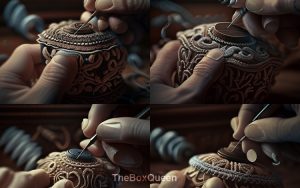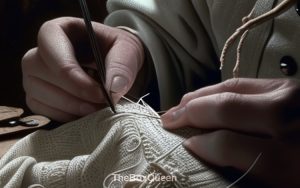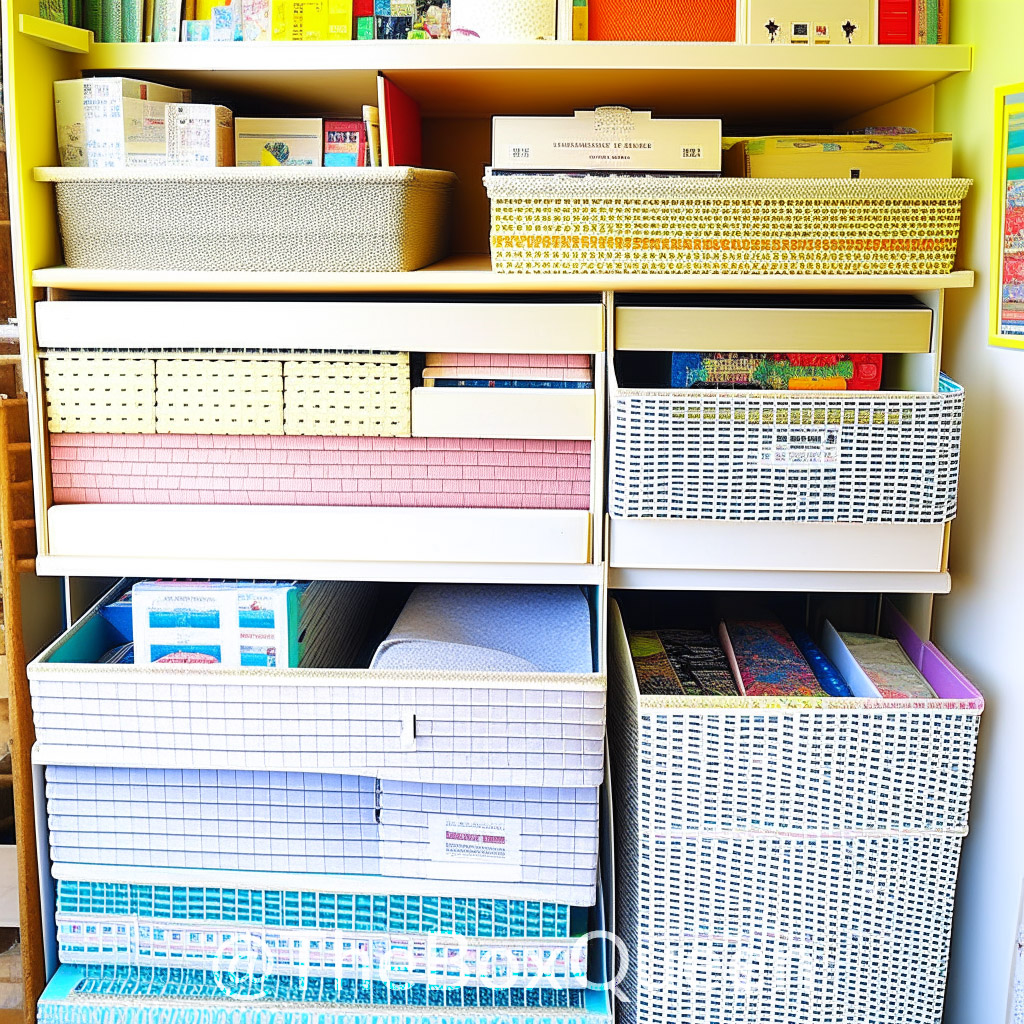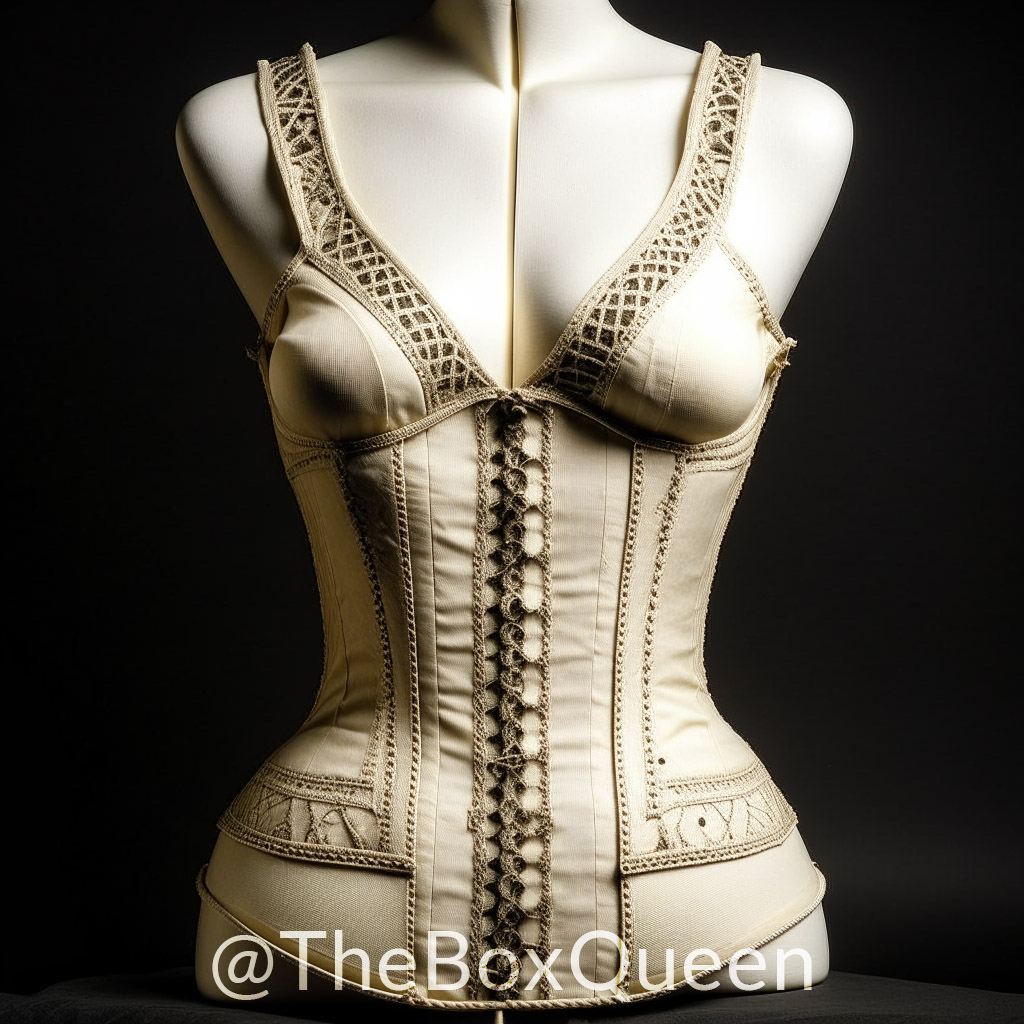An age-old method of sewing that is still used today is hand sewing. It is a craft that takes talent, patience, and accuracy and is frequently regarded as a calming and contemplative exercise. Even though contemporary sewing machines are quick and convenient, hand stitching is still a common option for many crafters since it is straightforward and provides for more control and precision.
The fact that hand stitching doesn’t require expensive equipment is one of its key advantages. All you need is a sewing machine, some fabric, and some thread. This makes it a practical and affordable choice for anyone who wants to master the skill.
Hand stitching is also a portable pastime that can be performed anywhere, making it a great hobby for people who are constantly on the go or have a limited amount of room.
Additionally, hand stitching has a lengthy cultural past. Hand-stitched textiles and garments have played a significant role in many civilizations throughout history, and indigenous tribes all over the world continue to use traditional hand-sewing methods. Hand-sewn clothing has seen a comeback in popularity in recent years, with many designers and craftspeople adopting traditional methods to create distinctive and lovely pieces.
Overall, hand sewing is a timeless and adaptable art that provides a wide range of advantages, from the ability to make lovely and distinctive textiles and clothing to relaxation and stress alleviation. Hand sewing is a hobby that may be enjoyed by people of all ages and sewing abilities, whether you’re a novice or an expert.
Hand sewing techniques for beginners
People of all ages and ability levels can enjoy the classic and adaptable craft of hand stitching. Before embarking on more complex tasks if you are new to hand sewing, you need become proficient in a few fundamental skills.
Beginners should start by learning the fundamental running stitch. This straightforward straight stitch can be used to close a seam or join two pieces of fabric together. A running stitch is created by threading your needle, knotting the end of the thread, and then pushing the needle through the fabric twice, leaving a small space between each stitch. Repeat this procedure, being careful to maintain straight, uniform stitches of the same length.
The backstitch is yet another fundamental skill for novices. This stitch is more robust and long-lasting than the running stitch and is frequently used to fix ripped seams or form a more enduring bond between two pieces of fabric. Starting with a small running stitch, form a small loop by bringing the
Needle back up through the fabric just behind the initial stitch. This is how to make a backstitch. Repeat this procedure, being careful to maintain straight, uniform stitches of the same length.
The whipstitch is another essential basic technique. This quick and simple stitch is used to attach two fabric edges together, such as when hemming clothing. Thread your needle and knot the end of the thread to create a whipstitch. Then, make a tiny loop by passing the needle up through one edge of the fabric and down through the other. Repeat this procedure, being careful to maintain straight, uniform stitches of the same length.
The blanket stitch, which is frequently used for edging or ornamental work, and the buttonhole stitch, which is used to make a strong and secure buttonhole, are additional fundamental skills that novices should learn.
Since practice is the key to mastering these hand-sewing techniques, start with simple chores like mending torn seams or hemming clothing before gradually moving on to more challenging ones like embroidery or garment assembly. Always be persistent and patient; over time and with practice, you’ll be able to create beautiful and unique textiles and garments.
Basic hand sewing techniques, such as running stitch and blanket stitch
A fundamental hand sewing method known as the running stitch is used to affix two pieces of fabric together or to finish a seam. You’ll need a needle and thread to create a running stitch. Tie a knot at the end of the thread after threading the needle. Next, leave a very small space between each stitch as you pass the needle through the fabric on one side and up through the other. Repeat this procedure, being careful to maintain straight, uniform stitches of the same length. This stitch is frequently employed for basting, emergency seam repairs, and temporary stitching.
Another simple hand sewing method that is frequently used for edging or ornamental work is the blanket stitch. This stitch gives blankets, clothing, and other goods a tidy and safe edge. Thread your needle and knot the end of the thread to create a blanket stitch. Bring the needle up through the cloth from the back to the front, then re-insert it just a little ways away but slightly above the first time. Make a loop by bringing the needle back down through the fabric. Repeat this procedure, being careful to maintain straight, uniform stitches of the same length.
Both of these stitches are easy to learn and just need the most basic sewing equipment. They can be used to make a wide range of crafts, from straightforward repairs to more complex ones like embroidery or garment creation. With enough effort, you’ll be able to make your own gorgeous and distinctive textiles and clothing.

Tutorials for hand sewing projects, such as making a quilt or repairing a piece of clothing
There are many hand-sewing projects that you can try, from simple repairs to more advanced tasks such as quilting and garment construction. Here are a few tutorials to help you get begun:
- Making a quilt:
In order to make a warm and comfortable blanket, quilting is a traditional hand sewing art that entails sewing layers of fabric and batting together. You’ll need batting, fabric scraps, and a needle and thread to build a quilt. Choosing a color palette and cutting fabric scraps into squares or rectangles are the first steps. The fabric pieces should then be spread out on a level surface and arranged in a design. Once you have the pattern you want, put the pieces together with a whipstitch or a running stitch. Using a running stitch or a whipstitch, layer the quilt top, batting, and a backing fabric once all the parts have been assembled.
- Repairing a piece of clothing:
Simple clothing repairs like ripped seams or missing buttons can be easily completed by hand stitching. Thread a needle, then knot the thread to mend a torn seam. Beginning at one end of the tear, use a whipstitch or a backstitch to stitch the torn edges back together. Be sure to keep your threads as close as you can to the fabric’s edge. Thread a needle and knot the thread to attach a missing button. Where the button should be, insert the needle through the fabric, then push it through one of the button’s holes and bring it back up through the other hole. Repeat this procedure numerous times, being mindful to maintain the button firmly in position.
These are only a handful of the numerous hand sewing tasks you might attempt. You can make stunning and distinctive clothes and fabrics by hand with a little perseverance and practice. Always be persistent and patient; with time and experience, you’ll be able to make stunning and one-of-a-kind clothing and fabrics.
Information on tools and materials needed for hand sewing, such as needles and thread
Hand sewing requires a few tools and materials, but a few essential items are required to start. Here is a list of some of the essential tools and materials needed for hand sewing:
- Needles: Every size and kind of needle is intended for a particular kind of fabric or project. Sharps, between, and embroidery needles are the three most popular types of needles used in hand stitching. While between are shorter and more stiff, making them perfect for quilting and thick materials, sharps are a good all-purpose needle. Larger eyes on embroidery needles make it simpler to thread them with thicker embroidery floss.
- Thread: Cotton, polyester, and nylon are just a few of the many colors and materials that are available for thread. The proper thread for the job must be chosen because every type of thread has certain qualities that make them distinct. The majority of hand sewing jobs may be completed with cotton thread, which is the most popular and functional thread. Use polyester thread with synthetic textiles since it is robust and long-lasting. Strong and elastic, nylon thread is ideal for use on knit textiles.
- Scissors: You’ll need a good set of scissors to cut through fabric and thread. For perfect cutting, locate a pair of scissors with a fine point, are sharp, and are easy to hold.
- Thimble: A thimble is a little metal or plastic cap worn on the finger as a needle-protection measure. The risk of damage is decreased and it makes it easier to push the needle through the fabric.
- Measuring tape: The cloth is measured using a measuring tape, and the length of the seams is also checked.
- Pincushion: You use a pincushion to keep and arrange your pins.
- Seam ripper: A tiny tool called a seam ripper is used to take out stitches or open seams.
- Fabric: Your choice of cloth will be influenced by the project you are working on.
With these tools and materials, you’ll be well-prepared to tackle any hand-sewing project. Always use proper quality materials, as they will make your projects more durable and satisfying.
Information on the history and cultural significance of hand sewing
The history and cultural significance of hand sewing go back many decades. Hand-stitched textiles and garments have played a significant role in many civilizations throughout history, and indigenous tribes all over the world continue to use traditional hand-sewing methods.
Hand stitching was employed in ancient civilizations to make blankets, bags, tents, and other textiles in addition to clothes. Intricate needlework and lace were made in the middle Ages by experienced artists employing hand stitching methods. The development of the sewing machine during the Industrial Revolution made it possible to produce clothing in large quantities, yet hand sewing was still utilized to create bespoke and beautiful apparel.
Many traditional clothes have also been hand-stitched, such as the hand-sewn kimonos of Japan and the hand-embroidered attire of Mexico. Also a significant component of African American culture, hand-sewn quilts and other textiles were frequently utilized to preserve history and tell tales.
Recently, there has been a rebirth in interest in hand-sewn clothing, with many designers and craftspeople embracing traditional methods to create distinctive and lovely clothes. A growing trend in self-expression and personal pleasure is hand stitching. Many people are turning to hand sewing as a way to take their time, reconnect with old talents, and make one-of-a-kind items that express their own sense of style.
Overall, hand sewing is a timeless and adaptable skill that has been employed in several cultures all over the world and has had a significant impact on human history. It is a craft that takes talent, patience, and accuracy and is frequently regarded as a calming and contemplative exercise. It’s a more affordable option than machine stitching and gives you more control and precision while making a product.

Tips and tricks for improving hand sewing skills
Here are some pointers and strategies to help you get better at hand sewing:
- Practice regularly: Regular practice will help you become better at sewing. Beginning with easy tasks like patching broken seams or hemming a garment, you can then progressively advance to more difficult tasks like embroidery or garment fabrication.
- Use the right needle and thread: Use the appropriate needle and thread: For neat, sturdy, and polished-looking stitches, use the appropriate needle and thread for the fabric and project.
- Keep your work area well-lit: Maintain good lighting in your workspace: Hand sewing requires good illumination so that you can see the fabric well and create exact stitches.
- Use a thimble: Use a thimble to shield your finger from the needle: A thimble is a tiny metal or plastic cap that you wear on your finger. The risk of damage is decreased and it makes it easier to push the needle through the fabric.
- Take your time: It requires patience and focus to stitch by hand. Make sure your stitches are even and the same length by taking your time and not rushing your task.
- Use a pincushion: Make use of a pincushion to keep your pins accessible and arranged.
- Try out several hand-sewing methods: There are numerous methods for hand-sewing, each with special qualities of its own. Try out various approaches to determine which ones you prefer.
- Learn from others: Joining a sewing group, taking a class, or following hand-sewing authorities on social media are all great ways to learn from others and find inspiration for your upcoming project.
- Keep your tools in good condition: Maintain the quality of your equipment by checking the sharpness of your needles, the cleanliness and sharpness of your scissors, and the condition of your thread.
- Enjoy yourself: if your stitches aren’t perfect, don’t be too hard on yourself. Hand sewing should be joyful. Always keep in mind that practice makes perfect, and most importantly, have fun while doing it.
By using these pointers and tactics, you’ll be well on your way to developing your hand sewing abilities and making lovely and one-of-a-kind fabrics and clothing by hand.
Conclusion:
In conclusion, hand stitching is an age-old skill with many applications and a deep cultural importance. It has several advantages, like being a calming and contemplative pastime, enabling greater control and precision while constructing a project, and being a more affordable option than machine sewing.
The running stitch, backstitch, and whipstitch are a few fundamental skills that must be mastered before learning how to sew by hand. You can undertake a variety of hand sewing projects, from easy fixes to more difficult ones like quilting and clothing fabrication. To get you started, a few tutorials were offered.
The minimal tools and materials needed for hand sewing include needles, thread, scissors, thimbles, measuring tapes, pin cushions, and seam rippers. Your project’s requirements will determine the cloth you use.
The correct equipment and materials, as well as practice and patience, are necessary to improve hand stitching abilities. It was suggested that you practice frequently, use the proper needle and thread, keep your workspace well-lit, take your time, and have fun in order to help you enhance your abilities.
Overall, hand stitching is a timeless and adaptable activity that individuals of all ages and ability levels may appreciate. You can make stunning and distinctive clothes and fabrics by hand with a little perseverance and practice.




